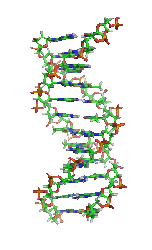HANS SAUTTER
In December 2010, Robin Ali became suddenly excited by the usually mundane task of reviewing a scientific paper. I was running around my room, waving the manuscript, he recalls. The paper described how a clump of embryonic stem cells had grown into a rounded goblet of retinal tissue. The structure, called an optic cup, forms the back of the eye in a growing embryo. But this one was in a dish, and videos accompanying the paper showed the structure slowly sprouting and blossoming. For Ali, an ophthalmologist at University College London who has devoted two decades to repairing vision, the implications were immediate. It was clear to me it was a landmark paper, he says. He has transformed the field.
'He' is Yoshiki Sasai, a stem-cell biologist at the RIKEN Center for Developmental Biology in Kobe, Japan. Sasai has impressed many researchers with his green-fingered talent for coaxing neural stem cells to grow into elaborate structures. As well as the optic cup1, he has cultivated the delicate tissue layers of the cerebral cortex2 and a rudimentary, hormone-making pituitary gland3. He is now well on the way to growing a cerebellum4 the brain structure that coordinates movement and balance. These papers make for the most addictive series of stem-cell papers in recent years, says Luc Leyns, a stem-cell scientist at the Free University of Brussels.
Sasai's work is more than tissue engineering: it tackles questions that have puzzled developmental biologists for decades. How do the proliferating stem cells of an embryo organize themselves seamlessly into the complex structures of the body and brain? And is tissue formation driven by a genetic program intrinsic to cells, or shaped by external cues from neighbouring tissues? By combining intuition with patient trial and error, Sasai has found that it takes a delicate balance of both: he concocts controlled environments that feed cells physical and chemical signals, but also gives them free rein to 'do their thing' and organize themselves into issues. He sometimes refers to himself as a Japanese matchmaker who knows that, having been brought together, two strangers need to be left alone. They know what to do, he says. They interact in a delicate manner, and if the external cues are too strong, it will override the internal ones.
Sasai's work could find medical applications. Recapitulating embryonic development in three dimensions, it turns out, generates clinically useful cells such as photoreceptors more abundantly and efficiently than two-dimensional culture can, and houses them in an architecture that mirrors that of the human body. Sasai and his collaborators are now racing to implant lab-grown retinas into mice, monkeys and humans. The way Sasai sees it, maturing stem cells in two-dimensional culture may lead to 'next generation' therapy but his methods will lead to 'next, next generation' therapy.
A bit stiff in movement and reserved in manner, Sasai nevertheless puts on a theatrical show with a cocktail shaker at parties held by his institute after international symposia. My second job is bartender, he says, without a trace of a smile. It is, however, the cocktails he mixes in 96-well culture plates that have earned him scientific acclaim.
Like many members of his family, Sasai studied medicine. But he soon became frustrated by the lack of basic understanding in the field, especially when it came to neurological conditions. Without knowing the brain, a doctor cannot do much for the patient and therapeutics will always be superficial, he recalls thinking. There seemed no better way to know the brain than to study how it emerges and folds in the embryo. It's complex and usually complex systems are messy, says Sasai. But it's one of the most ordered. He wanted to know how this elaborate system was controlled.
We set up the permissive conditions. But after that we don't do anything. Keep them growing and let them do their job.
One piece of the puzzle was well known: the Spemann organizer, a node in vertebrate embryos that induces surrounding cells to become neural tissue. How the organizer works had been a mystery since its discovery in 1924; to find out, Sasai accepted a postdoctoral position at the University of California, Los Angeles. The post got off to a difficult start when Sasai was robbed of his money and passports at the airport on his way to California. But his scientific efforts were soon rewarded. He replaced the passports and within a month produced the clones that gave us the famous gene chordin, says his supervisor, developmental biologist Eddy De Robertis.
Sasai and his colleagues discovered that the chordin protein is a key developmental signal released by the Spemann organizer5. Rather than pushing nearby cells to become neurons, they found, chordin blocks signals that would turn them into other cell types6, 7. The work helped to establish the default model of neural induction: the idea that, without other signals, embryonic cells will follow an internal program to become neural cells.
Read the rest here:
Tissue engineering: The brainmaker
